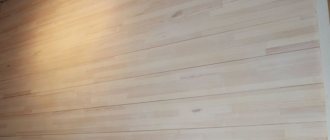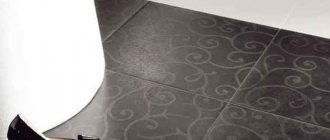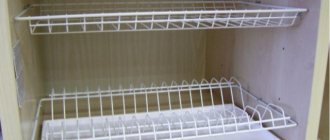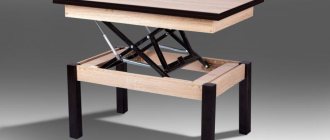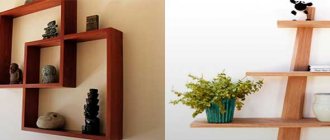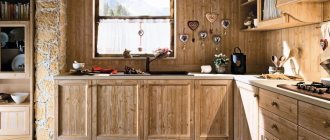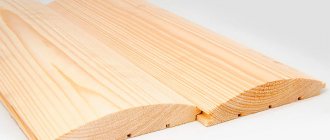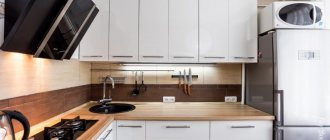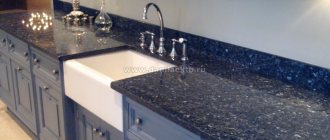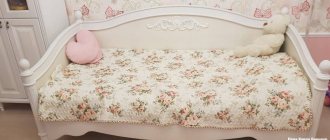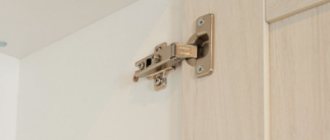Peculiarities
Pine furniture panels are popular among both builders and furniture makers. The production of products from pine material is accessible and low cost. Furniture panels are made from pine edged lumber with the addition of a binding component in the form of polymer adhesive compositions.
Pine material has a lot of positive properties:
- expressive natural wood texture;
- the ability to achieve a high degree of smoothness when grinding external surfaces;
- processing does not require the purchase of complex and expensive equipment;
- environmentally friendly and hypoallergenic.
Furniture pine panels are not prone to internal stress , so the material does not crack or warp over time. Coniferous wood has great potential for use. From this material you can make furniture for children and adults, perform interior decoration, produce windows, trim, and door panels. Pine wood is highly resistant to moisture, so it is used for finishing saunas and baths. It is not susceptible to mold, mildew and rot.
The cost of pine furniture panels depends on the class of the product and its dimensions.
Colors
The uniqueness of the furniture board production technology is that it can be made from any type of wood that exists in the world. The resulting solid wooden canvas with a natural shade of texture will depend only on the type of wood from which the lumber was made.
The most common and affordable types of trees for making furniture panels are:
- pine, with shades of yellow-whitish sapwood, which during drying may darken slightly, taking on a brownish-red color;
- oak, which has a brownish or yellow-brownish texture with narrow yellow-white stripes;
- birch, which ranges in color from ivory to gray-red with a layered texture with small dark wavy lines,
- alder, which can have up to 30 reddish natural shades.
For the production of furniture facades, the following types of wood are often used:
- cherry or sweet cherry with a natural color in dark red tones with green splashes, expressed in the form of a pattern of parallel wavy lines;
- ash, reminiscent of oak structure, only slightly lighter with a matte gray or white tint;
- maple, which has hard wood with a beautiful texture of a light reddish color.
Varieties
In the process of manufacturing furniture panels from edged lumber, various types of technologies are used. There are two options for pine panels:
- solid array of canvas;
- spliced view of the canvas.
Spliced glued furniture panels are divided into products:
- with a closed type of spike;
- with an open appearance of the thorn.
In addition, furniture panels are divided according to manufacturing technology:
- with single-layer fabric;
- with multi-layer fabric.
Furniture panels are also usually divided into types according to the method of application:
- solid lamella board - it is made by connecting individual long lamellas with an adhesive composition, the surface of such a board has the same strength as a solid slab;
- carpentry panel - its front surface is of low quality and requires additional processing.
Modern woodworking production can produce pine panels using various types of technologies depending on the quality of the raw materials. The starting material is usually trimmed natural wood.
Almost all pine products are made from Angara pine, which grows in the Krasnoyarsk Territory.
Elements for stairs, types of steps, platforms, beams:
For staircase elements (balusters, beams, steps, turning platforms and others) there is a similar classification.
But in addition to the AA and AB varieties, the Extra variety is also available.
- The “Extra” mark marks steps and turning platforms with a solid-lamella surface with a smooth structure of uniform color.
- Grade AA - mainly used on spliced type products. The surface has minimal natural errors.
- Grade AB – with darkening in the form of living fused knots. The most cost-effective option. Suitable for stairs in country houses.
Classes
The cost of finished pine slabs depends on their classification by grade. Determination of grade is carried out by assessing the surface quality of the material. The material is marked in letters written with a fraction. For example, the notation A/C would mean that one side of the board is grade A, and the other side is grade C.
Furniture panels made of pine can be of several classes.
C
This grade allows for the presence of surface chips and cracks in the material, as well as a large content of large-sized knots. Furniture panels of this quality are used as blanks that will be veneered or laminated. Grade C material is used for construction needs or the construction of frames that will not be visible to prying eyes.
B
Furniture panels are made from connected lamella bars, which are not specifically selected for color shades and uniformity of texture. There may be minor flaws on the surface in the form of small cracks. Knots are present in the material, but their number is small. The material is used in the manufacture of furniture frame structures. The strength and reliability of the material provides it with a long period of operation.
A
Trimming material is selected according to color shade and texture. There should be no significant flaws or cracks on the surface of the shield. Knots can be present only in small quantities, their size should be minimal. The material is used to create external furniture structures and external parts.
Furniture panels of this quality have a balanced ratio between price and quality level.
Extra
The material consists of a solid lamellar fabric, where the components are selected according to the texture pattern and color shades. Such furniture panels do not have scratches, chips, or cracks . As a rule, the composition of the canvas is selected without knots; it uses the best selected wood raw materials. Before being released for sale, the shield undergoes a long and thorough finishing process. The cost of Extra class material is higher than all other analogues; the price can be compared with valuable wood species.
Varieties (review)
Classification of materials
can be carried out according to a variety of criteria. Among the most important differences is the raw material. These can be stacked panels made of laminated chipboard and solid wood. Depending on the type of finish, the material can be laminated or veneered. The moisture-resistant version is glued together, and then treated with moisture-proof materials, and occasionally covered with shrink film. Based on the gluing method, we distinguish furniture panels into 2 categories:
- Solid-lamella - in it, laminated veneer lumber is fastened along its length, with each of the planks running from one edge to the other and being a solid piece of wood. The main advantage of this method is the beauty and strength of the created module, since it looks homogeneous. Shields can be decorated with glazing, because they look like a solid mass.
- Spliced - in this gluing method, a lamellar connection is made along the width and length, and there are much more seams; microscopic spikes are occasionally used for the closest possible contact of all components. This method has certain disadvantages, which are associated with the structure (its diversity) and lack of homogeneity. But at the same time, the spliced shield has increased bending strength and is suitable for creating load-bearing types of structures.
Furniture panels made of wood can be made with different methods of end processing. Options that are created by means of a round milled version or one that is selected by a groove are usually offered to be chosen when creating individual panels. For further processing, boards made from hardwood - oak, maple - are ideal, while soft pine needles are usually used for elements that are as simple in shape as possible. Classification of panels according to decorative properties is quite popular in the production of furniture. Here we will highlight several options that fully determine the uniformity of coloring and placement of fibers relative to each other.
- Radial is the optimal option in terms of uniformity, with the lamellas laid parallel, and the color is natural and does not have a sharp transition. In the structure, the fibers lie radially, and the deviation in width should in no case be more than 2 cm.
- Natural - for this class of shields, a characteristic feature is the uniformity of the structure, but the presence of light “eyes” is acceptable, the diameter of which is no more than 0.3 cm. There are no strict requirements for the direction of the fibers.
- Select is a class where the sewn surface can be heterogeneous in lamella size and color. Wood fibers are usually placed in different directions. Select panels have quite noticeable defects, such as knots and curling.
- Rustic is the most variegated option, and sometimes it is made from several types of wood. Despite the far from being the best quality, this option is especially loved by Russian designers. The finished slab looks like laid parquet; usually it should be coated with wax or paintwork for protection to create a beautiful decorative solution.
This is not an official classification, but it is used in sales as well as in production. Buyers must be guided by this data so as not to waste time from the very beginning searching for those options that practically do not meet the established objectives.
How to take into account the material of shields
From oak
Furniture panels made of oak, quite an elite wood, are aimed at creating countertops and furniture. The pattern on the panel surface can be variegated or uniform - each option has certain advantages and disadvantages. The main advantage of oak panels was their high density, ranging from 730-780 kg per cubic meter. At the same time, they are durable, solid and massive.
From fiberboard
In this case, production is carried out using classical technology, but using a more valuable base material - natural hardwood, which significantly improves the performance properties of the shield. One or both sides can be smooth. The hot pressing method using resins ensures high strength of the connection of the elements. But if formaldehyde is added, such a shield can no longer be called furniture.
Made from linden, alder and larch
These types of natural wood have a beautiful pattern, and they are also very durable and strong. Linden has the advantage of having natural antiseptics, which make the material resistant to decay and other biological damage. Larch is not afraid of contact with moisture. Alder is quite beautiful, very dense and hard. Panels made from wood of such species are often used in interior decoration.
From spruce and pine
Such softwood boards are quite inexpensive. Moreover, they are light in weight and moisture resistant, since the material contains resins. The density is quite low, no more than 525 kg per cubic meter.
Made from bamboo
The material is truly exotic, and therefore it is produced in limited quantities. It is also appreciated by people who adore Asian aesthetics. Bamboo panels are quite flexible, and they can be used to make structures with complex geometries. Due to their rarity, they are very expensive, but they look unusual, which means they are always in use.
Made from MDF and chipboard
Classic chipboard and MDF boards can also be classified as panels. But the raw materials for creation are not always environmentally friendly. Physical and mechanical strength is also much inferior to analogues made from solid wood. MDF boards are a more elite material, and therefore they are more highly valued.
Characteristics of furniture panels
In order to correctly select material for further work, you need to have an idea of the characteristics. Furniture panels - you can also find the name “furniture board” - are divided into 2 large groups:
- solid lamella boards - characterized by the fact that the lamellas cut from the board are selected in one piece for the entire length of the finished product. You can also come across the term “monoblock”;
- the spliced type is when the lamella bars are spliced lengthwise.
Within the last group, several more types are distinguished, depending on the layers being fused:
- wood laminated;
- three-layer;
- with plywood inserts;
- with slatted inserts;
- Monoplasts are economical.
Three-layer
The characteristics and dimensions of furniture panels produced by manufacturers may have different effects on the areas of application and calculation of material consumption.
As an example, we can consider the possibilities of a shield on lamellas. In this case, the product may have the following set of characteristics:
- it will be made by connecting the lamellas in length or width. If the design involves laying out the lamellas relative to the width, they can have size ranges in millimeters: 100-110, 70-80, 40-45;
- if the slab was made in one piece, then the length of the sheet can be up to two meters, and if an assembly of lamellas was used, then up to five meters;
- the sheet thickness will be from 18 to 40 mm, but if the project requires, manufacturers can make other necessary options;
- The moisture level varies depending on the type of wood and batch, ranging from 6-12 percent. The optimal level is 8 percent;
- The quality of grinding is expressed in the degree of grit. The acceptable range is from 80 to 120 units.
Based on the characteristics parameters, you can choose the optimal option and dimensions, taking into account the subsequent finishing and processing of the finished product. Knowing the requirements for materials, you can choose the material wisely and thereby reduce financial costs and consumption. Remember that cheap product options may have shortcomings that will have to be addressed. Higher quality options are purchased in perfectly prepared condition.
Important physical and technical characteristics that provide a qualitative advantage of furniture boards over other types of materials include:
- high quality of compatibility with other types of materials;
- The surface of the boards is polished with high quality, so it is excellent for coating with both opaque and transparent compounds.
Furniture manufacturers choose this type of material when they plan to manufacture complex structures that are characterized by the presence of threaded connections, special cut shapes and complexity of fittings. Chipboard will not work here, but furniture panels will cope with the assigned tasks perfectly.
Where is it used?
The use of furniture panels has gained popularity in the creation of countertops and tables, as well as cabinets and kitchen facades. In structure they are close to wood. Products can be carved and milled. From thin shields you can make a beautiful carved screen for radiators or a screen.
Thick ones are suitable for making steps for stairs, window sills, shelving and storage systems. The use of the material is no less in demand in the field of interior decoration. The unusual pattern and structure of the spliced material, which resembles parquet, was used here.
Floors with this type of finish can be varnished, waxed and treated with impregnations. Finishing walls or creating partitions can also be done using furniture panels. If you need to make durable and soundproofing ceilings, such glued boards are perfect. Taking into account the recommendations given in the article, you can easily cope with the task of choosing the most suitable material for making interior items or finishing rooms.
Standard sizes
The dimensions of furniture boards are not regulated by GOST, however, manufacturers, when developing internal product standards, are based on consumer demand. Thus, we can say that the minimum possible slab size can be:
- length – 50 mm;
- width – 100 mm.
Despite the seemingly miniature dimensions, such a sheet is in great demand on the market, as it allows you to perform a wide range of tasks during construction and finishing work. The largest shield can reach dimensions of 5000x1200 mm. Such large sizes are ideal when finishing a large area. When purchasing such material, you will need high-quality equipment to make precise cuts.
Standard dimensions of furniture panels (mm):
- 600x1200, 2000, 2400, 2700;
- 500x1000, 1200, 2000, 2400, 2700;
- 400x600, 1000, 1200, 2000, 2400, 2700;
- 300x600, 800, 1000, 1200;
- 250x600, 800, 1000, 1200;
- 200x600, 800.
For convenience, manufacturers often use step-by-step gradation of furniture panel sizes. For example, in the range from 900 to 5000 mm, the length will change in increments of 100 mm.
Standard sizes
Width
The standard width of furniture panels is considered to be 200, 300, 400, 500 and 600 mm. This parameter determines whether the part will be solid or composite. If the width is planned to be non-standard, then the manufacturer and the customer will agree on the maximum deviations for the parameter. At the same time, making a shield from a board with a non-standard width will be more difficult than when using lamella bars. The most common parameters for furniture panels are:
|
|
|
The width of 250 mm is less common; we can say that this width is some deviation from the standard: 250x600, 800, 1000, 1200 mm.
Length
The length parameter of the furniture panel plays a role when it is necessary to calculate the height of the future product. If the base is a board that is connected along the length, such material will become a reliable basis for the body of future furniture.
A standard length furniture panel will be equal (in mm):
- 2000, 2400, 2700;
- 1000, 1200;
- 600, 800.
A construction furniture panel is considered to be a product with a length of 2000-4000 mm. Parameters equal to 800 and 2500 mm are also in great demand on the market.
Thickness
When it comes to the thickness of a furniture board, during its production it is imperative to take into account that the initial thickness of the boards will necessarily undergo planing and grinding, which will remove the top layer of material. The so-called 5 mm allowance will be removed in 2 stages. First, external defects are removed, and then the sheet will undergo finishing treatment so that the surface becomes perfectly smooth.
The thickness is selected depending on the purpose of the parts to be manufactured:
- 16 mm – facades, countertops, body parts, economy class;
- 18-20 mm – standard class. In addition to the above, headboards can be made;
- 30-40 mm – standard and luxury classes. Supporting and body parts, tabletops, seats, armrests.
Thickness is the main category that influences how the material is used. Moreover, the larger the parameter, the more expensive the lumber will be. A high-quality product can withstand a decent load, but if you choose it incorrectly, it is very likely that the shelf or the bottom of the drawer will break under the weight of things.
Custom sizes
Considering that each manufacturer initially approves its own specifications according to which it subsequently standardizes the production of furniture panels, in this case those that go beyond the previously regulated framework will be considered non-standard sizes. In this case, it will depend on the production capabilities of the enterprise and its equipment.
Non-standard sizes will be in demand for individual design projects that go beyond the required parameters in terms of use. An example would be mini versions of 50x100 mm, or a shield 5000 mm long with a standard parameter of 3500 mm.
Small caliber can be used for the manufacture of decorative or small furniture decoration elements. Large samples are used in the manufacture of cabinet and built-in furniture. A large sheet will have no seams, which means the surface will look as attractive as possible.
3) Larch
1. Furniture board grades - Extra/A, not jointed along the length (solid-lamella).
| No. | Limitation norm in detail | ||
| On the front surface (Extra) | On the non-facial surface (A) | ||
| 1. | Bitches | Not allowed | Healthy, fully or partially fused ones with a diameter of 2-3 mm are allowed, including on the edges of the lamellas, no more than 3 pcs/m2 |
| 2. | Resin pockets | Not allowed | Allowed: — for products up to 300mm wide, up to 3x50mm in size, no more than 2 pcs. at 1m/p. — for products with a width of over 300mm and a size of up to 3x50mm, no more than 3 pieces. at 1m/p. |
| 3. | Sapwood | Not allowed | Not allowed |
| 4. | Browning, redness | Allowed | Allowed |
| 5. | Sineva | Not allowed | Not allowed |
Notes for the "Extra" variety:
1. Other wood defects are not allowed.
2. The lamellas used for the manufacture of shields of category “Extra/A” must be solid, that is, not spliced along the length.
3. At the end of a laminated board of the “Extra” grade, which has the form of a radial cut, the angles of inclination of the annual rings in adjacent lamellas in relation to the non-facial plane of the board should alternate. If in the previous lamella this angle is less than 90 degrees, then in the next lamella its value should exceed 90 degrees.
4. At the end of a laminated board of the “Extra” grade, which has the form of a tangential cut, the convexities of the annual rings in adjacent lamellas should be oriented in the opposite way with respect to the front plane of the board. If in the previous lamella this convexity is oriented towards the front surface of the shield, then in the subsequent lamella it should be oriented towards the non-front side.
2. Furniture board grade - A/B, spliced along the length onto a closed mini-tenon.
Category "A/B"
| No. | Limitation norm in detail | ||
| On the front surface (A) | On the non-facial surface (B) | ||
| 1. | Bitches | Healthy, fully or partially fused ones with a diameter of 2-3 mm are allowed, including on the edges of the lamellas, no more than 3 pcs/m2 | Healthy, fully or partially fused lamellas with a diameter of 1/2 the width are allowed, including at the edges of the lamellas |
| 2. | Resin pockets | Allowed: — for products up to 300mm wide, up to 3x50mm in size, no more than 2 pcs. at 1m/p. — for products with a width of over 300mm and a size of up to 3x50mm, no more than 3 pieces. at 1m/p. | Allowed |
| 3. | Sapwood | Not allowed | Allowed |
| 4. | Browning, redness | Allowed | Allowed |
| 5. | Sineva | Not allowed | Allowed |
| 6. | Loose fit of the mini-spike / gluing defect | Not allowed | Individual pinpoint, non-through holes no more than 1/4 the height of the tenon |
Notes for grade "A":
1. Other wood defects are not allowed.
2. For the production of laminated boards of category “A”, lamellas spliced along the length are used. At the same time, during the assembly of glued boards, the lamellas must be oriented in such a way that the place where the lamellas are joined along the length extends to the front and non-front sides of the board not in the form of a “Herringbone”, but in the form of a “Seam”.
3. The front surface of laminated boards of categories “Extra/A”, “A/B” must consist of lamella surfaces oriented in such a way in this board that they look like only a radial or tangential cut.
3. Furniture board grade V/C, spliced along the length into a closed mini-tenon.
| No. | Limitation norm in detail | ||
| On the front surface (B) | On the non-facial surface (C) | ||
| 1. | Bitches | Allowed, except for dropped ones | Allowed |
| 2. | Resin pockets | Allowed | Allowed |
| 3. | Fungal heart stains, sapwood, browning, blue | Allowed | Allowed |
| 4. | Non-through cracks | Not allowed | Allowed |
| 5. | Through cracks | Not allowed | Not allowed |
| 6. | Sprouting | Allowed | Allowed |
| 7. | Core | Allowed | Not allowed |
| 8. | Resin, curlyness, curl, roll, inclination of fibers | Allowed | Allowed |
| 9. | Rot | Not allowed | Hard is allowed |
| 10. | Worm-hole | Allowed | Allowed |
| 11. | Rip, chip, dent, scuff | Allowed | Allowed |
| 12. | Neprostrog | Allowed | Allowed |
| 13. | Obzol | Not allowed | Allowed |
| 14. | Type of glued joint along the length of the lamella | Allowed | Allowed |
| 15. | Type of cut | Mixed | Mixed |
| 16. | Unglued | Slightly allowed | Allowed |
Maximum permissible dimensional deviations:
1. Humidity of lamellas 10% ± 2%.
2. Maximum deviations from the nominal dimensions of parts should be no more than:
Thickness 0/+0.1mm
Width 0/+0.5mm
Length 0/+0.10mm
3. Products are cut to length at an angle of 90 degrees.
Package:
- Packaging: Each panel, as agreed by the parties, is packed in heat-shrinkable film and placed in a transport package with maximum dimensions of 1200x1200x3000 mm, or without packaging each panel, but in heat-shrinkable film of the entire package. Between the pallet and the lower furniture board, as well as on top of the transport package, the boards are covered with gaskets (corrugated cardboard, substandard boards, etc.), which can ensure the safety of the boards during transportation and installation of the package on the package. The corners of the package are covered with thick cardboard (corrugated cardboard), and the perimeter is wrapped in heat-shrinkable or stretch film. The panels are fastened to the pallet using polypropylene tape through the corners according to the transport package diagram
- Tags - the form, content and format of tags are agreed upon additionally.
Plywood
Table of permissible deviations of plywood thickness from the nominal
| Nominal plywood thickness | Plywood ply, not less | Sanded plywood | |
| Maximum deviation | Variation in thickness | ||
| 3 | 3 | +0,3 -0,4 | 0,6 |
| 4 | 3 | +0,3 -0,5 | |
| 6,5 | 5 | +0,4 -0,5 | |
| 9 | 7 | +0,4 -0,6 | |
| 12 | 9 | +0,5 -0,7 | |
| 15 | 11 | +0,6 -0,8 | |
| 18 | 13 | +0,7 -0,9 | |
| 21 | 15 | +0,8 -1,0 | |
| 24 | 17 | +0,9 -1,1 | |
| 27 | 19 | +1,0 -1,2 | 1,0 |
| 30 | 21 | +1,1 -1,3 | |
| Nominal plywood thickness | Plywood ply, not less | Unsanded plywood | |
| Maximum deviation | Variation in thickness | ||
| 3 | 3 | +0,4 -0,3 | 0,6 |
| 4 | 3 | +0,8 -0,4 | 1,0 |
| 6,5 | 5 | +0,9 -0,4 | |
| 9 | 7 | +1,0 -0,5 | |
| 12 | 9 | +1,1 -0,6 | |
| 15 | 11 | +1,2 -0,7 | 1,5 |
| 18 | 13 | +1,3 -0,8 | |
| 21 | 15 | +1,4 -0,9 | |
| 24 | 17 | +,15 -1,0 | |
| 27 | 19 | +1,6 -1,1 | 2,0 |
| 30 | 21 | +1,7 -1,2 | |
Divided according to the composition of raw materials:
- birch plywood is used in conditions of increased load, where it is necessary to take into account the strength characteristics of the material;
- coniferous plywood is lighter weight and stronger;
- combined plywood.
Divided by water resistance:
- FC - plywood is glued together with urea resin. For indoor use;
- FSF - plywood is glued together with phenolic resin. For use both indoors and outdoors;
- FB —bakelized plywood—is impregnated with bakelite varnish and then glued together. Can be used in tropical climates, aggressive environments and sea water;
- FOF - laminated plywood - is birch plywood lined with a film coating (paper impregnated with synthetic resin) on one or both sides.
Divided according to the degree of mechanical processing:
- sanded plywood;
- not sanded plywood.
| Grade I is practically free of defects, only a few healthy fused knots with a diameter of up to 8 mm and minor brown veins are allowed. |
| Grade II allows repairing the surface of the sheet. Knots and open defects are sealed with veneer inserts. Covered with various finishing materials and paints. |
| Grade III This grade includes plywood sheets rejected from grade II(BB). Intended for the manufacture of structures hidden from external view, various special containers and packaging. |
| Grade IV All manufacturing defects are allowed. Knots are allowed in unlimited quantities, only good gluing is guaranteed. Used for the manufacture of durable containers and packaging. |
Division into classes
As previously mentioned, there is no single GOST regarding the parameters of furniture panels. Each manufacturer, based on the existing standards GOST 8486-86 and GOST 2140-81, has the right to establish its own technical production conditions. Conventionally, furniture panels, regardless of the material, are divided into 4 classes, which can also be called grades;
- C class or Economy - a lamella or spliced type panel with small defects that do not have a significant effect on the overall mechanical properties of the product. These may be small spots, cracks, knots. Suitable for subsequent veneering and lamination;
- To class - allows only healthy knots to be present on the canvas. Made by splicing lamellas. They do not select textures and shades based on pattern;
- And the class is a spliced shield made of lamellas of the “spike” type. Knots and other wood defects must be absent. Uniformity of tone and character of the pattern are important;
- Extra class - a solid-lamella type shield, without defects and knots. Lamels are selected according to color, tone, texture.
Division into classes
It also happens that the two sides of one shield differ in class. In this case, they resort to fractional letter markings to designate each side of the shield to its class. For example: AB, BB, A/B, B/C. Mechanical damage to the slab is not allowed in any of the specified grades. Also, regardless of class, the panels are sanded and completely ready for coating.
The modern construction market offers a wide range of furniture panels that will help implement any furniture and interior decoration projects. A high-quality furniture panel will have a perfectly flat surface, which is perfect for painting or covering with a colorless transparent base. The main thing is to choose one that will fully correspond to the idea in terms of parameters and type of wood.
Where can I buy?
Of course, when choosing furniture panels, it is also important to pay attention not only to the size, type and material of the wood, but also to its quality, manufacturer, humidity (should be minimal so that the product does not deteriorate during operation).
You can purchase beautiful and high-quality panels made from solid oak, beech, ash, and pine on our website. We select only the best lumber and woodworking products for our customers. They work with us and trust us!
Our advantages:
- Favorable delivery in Chelyabinsk,
- Great prices. Including wholesale.
- A wide range of.
Still have questions? Ask our specialists! Leave a request on the website - we will contact you shortly.
Needles (Pine, Spruce)
General characteristics of pine/spruce furniture board:
- packaging - shrink film;
- humidity - 8-10%;
- weight of a dense cube - 400-500 kg;
- execution - spliced/solid-lamella;
- processing - polished surface, abrasive grain size - 80-120;
- adhesive connection class - D3;
- lamella width - 30-50 mm;
- Brinell hardness - Pine 1.6/Spruce 1.3;
- tolerances on geometric dimensions - width ±2 mm/length ±2 mm/thickness ±0.3 mm.
| Thickness: 14 mm Category: “ AB ” - solid (Door extensions) Material: Needles (Spruce, pine) | ||||||||
| Length, mm | Width, mm | |||||||
| 100 | 150 | |||||||
| 2200 | 150 rub. | 225 rub. | ||||||
| Thickness: 14 mm Category: “ AB ” - spliced (Wooden panel for walls) Material: Needles (Spruce, pine) | |||||||
| Length, mm | Width, mm | ||||||
| 220 | |||||||
| 2200 | 329 | ||||||
| 2500 | 373 | ||||||
| Thickness: 18 mm Category: “ AB ” - solid lamella Material: Needles (spruce, pine) | |||||||
| Length, mm | Width, mm | ||||||
| 200 | 250 | 300 | 400 | 500 | 600 | 800 | |
| 500 | — | 90 | 107 | 143 | 179 | — | — |
| 600 | 86 | 107 | 129 | 172 | 215 | 258 | — |
| 800 | 115 | 143 | 172 | 229 | 287 | 344 | 458 |
| 1000 | 143 | 179 | 215 | 287 | 358 | 430 | 573 |
| 1200 | 172 | 215 | 258 | 344 | 430 | 516 | 688 |
| 1500 | 215 | 269 | 322 | 430 | 537 | 645 | 860 |
| 1800 | 258 | 322 | 387 | 516 | 645 | 774 | 1 032 |
| 2000 | 287 | 358 | 430 | 573 | 716 | 860 | 1 146 |
| 2500 | 358 | 448 | 537 | 716 | 896 | 1 075 | 1 433 |
| 3000 | 430 | 537 | 645 | 860 | 1 075 | 1 290 | 1 719 |
* “Furniture panel Cat. AB (needles)". The quantity needs to be specified!
- 2000x1000x18 mm - 1,433 rubles/piece
- 2500x1000x18 mm — 1,791 RUR/piece
- 3000x1000x18 mm - 2,149 rubles/piece
| Thickness: 28 mm Category: “ AB ” - solid lamella Material: Needles (spruce, pine) | |||||||
| Length, mm | Width, mm | ||||||
| 200 | 250 | 300 | 400 | 500 | 600 | 800 | |
| 1000 | 223 | 279 | 334 | 446 | 557 | 669 | 892 |
| 1200 | 267 | 334 | 401 | 535 | 669 | 802 | 1 070 |
| 1500 | 334 | 418 | 501 | 669 | 836 | 1 003 | 1 337 |
| 1800 | 401 | 501 | 602 | 802 | 1 003 | 1 2044 | 1 605 |
| 2000 | 446 | 557 | 669 | 892 | 1 114 | 1 337 | 1 783 |
| 2500 | 557 | 697 | 836 | 1 114 | 1 393 | 1 672 | 2 229 |
| 3000 | 669 | 836 | 1003 | 1 337 | 1 672 | 2 066 | 2 675 |
* “Furniture panel Cat. AB (needles)"
- Size 3000x1000x28 mm - RUB 3,343/piece.
- Size 2000x1000x28 mm - RUB 2,229/piece.
| Thickness: 40 mm Category: “ AB ” - solid lamella Material: Needles (spruce, pine) | |||||||
| Length, mm | Width, mm | ||||||
| 200 | 250 | 300 | 400 | 500 | 600 | 800 | |
| 1000 | 318 | *P | 478 | *P | 796 | 955 | 1 274 |
| 1200 | 382 | 478 | *P | 764 | 955 | 1 146 | *P |
| 1500 | *P | *P | 716 | 955 | 1 194 | 1 433 | 1 910 |
| 1800 | *P | 716 | 860 | *P | 1 433 | 1 719 | 2 292 |
| 2000 | *P | *P | 955 | 1 274 | 1 592 | 1 910 | 2 547 |
| 2500 | *P | 995 | 1 194 | 1 592 | 1 990 | 2 388 | 3 184 |
| 3000 | 955 | 1 194 | 1 433 | 1 910 | 2 388 | 2 866 | 3 821 |
*p - this item is in the window sills section, the window sills are chamfered on one side
Pine
* “Furniture panel Cat. A (Pine).” The quantity needs to be specified!
- 2500x600x18 mm - RUB 1,431/piece.
- RUB 1,908/piece 2500x800x18 mm —
- RUB 1,717/pcs. 3000x600x18 mm -
| Thickness: 18 mm Category: “ Extra ” - spliced along the length (“ Natur ”) Material: pine | |||||||
| Length, mm | Width, mm | ||||||
| 200 | 250 | 300 | 400 | 500 | 600 | 800 | |
| 2000 | — | — | 475 | 634 | — | 950 | 1267 |
| 2500 | — | — | — | 792 | 990 | 1 188 | — |
| 3000 | 475 | — | — | 950 | 1 188 | 1 426 | 1 901 |
| Thickness: 18 mm Category: “ Extra ” – length-joined Material: pine | |||||||
| Length, mm | Width, mm | ||||||
| 200 | 300 | 400 | 500 | 600 | 800 | 1200 | |
| 2000 | — | — | 719 | — | — | — | 2 697 |
| 2500 | 450 | 674 | 899 | — | 1 349 | — | 2 697 |
| 2900 | — | — | — | — | 1 564 | — | — |
| 3000 | 200 | — | — | — | 1 798 | — | — |
| Thickness: 40 mm Category: “ Extra ” – length-joined Material: pine | |||||
| Length, mm | Width, mm | ||||
| 250 | 400 | 500 | 600 | 800 | |
| 2500 | — | — | — | 2 997 | — |
| 3000 | — | 2 398 | 2 997 | — | — |
Birch
General characteristics of common birch furniture panels:
- packaging - shrink film;
- humidity - 8-10%;
- weight of a dense cube - 600-700 kg;
- execution - spliced;
- processing - polished surface, abrasive grain size - 100-120;
- adhesive connection class - D3;
- lamella width - 35-50 mm;
- Brinell hardness - 3.5;
- tolerances on geometric dimensions - width ±2 mm/length ±2 mm/thickness ±0.3 mm;
- size range - length 1000-3000 mm/width 200-1000 mm.
| finger-jointed Extra/A – Birch Furniture Panel – thickness 18 mm | |||
| Length, mm | Width, mm | Execution | price, rub. |
| 1800 | 700 | 2 016 | |
| 2000 | 700 | 2 240 | |
| 2500 | 400 | 1 600 | |
| Extra/A solid-lamella Furniture Board Birch - thickness 18 mm | |||
| Length, mm | Width, mm | Execution | price, rub. |
| 1800 | 600 | 1 944 | |
| 2000 | 600 | 2 160 | |
| 2300 | 600 | 2 484 | |
| 2500 | 600 | 2 700 | |
| 2800 | 600 | 3 024 | |
| 2900 | 600 | 3 132 | |
| Extra/A solid-lamella Furniture Board Birch - thickness 20 mm | |||
| Length, mm | Width, mm | Photo | price, rub. |
| 1000 | 600 | 1 200 | |
| 1000 | 800 | 1 600 | |
| 1200 | 600 | 1 440 | |
| 1200 | 800 | 1 920 | |
| 1500 | 600 | 1 800 | |
| 2000 | 600 | 2 400 | |
| 2200 | 600 | 2 640 | |
| 2400 | 400 | 1 920 | |
| 2800 | 500 | 2 800 | |
| 2800 | 600 | 3 360 | |
| 2900 | 600 | 3 480 | |
| 3000 | 600 | 3 600 | |
| Birch Furniture Board, finger-jointed - thickness 28 mm | ||||
| Thickness, mm | Length, mm | Width, mm | Category | price, rub. |
| 28 | 2000 | 800 | Extra/A | 4 000 |
| 2500 | 800 | 5 000 | ||
| 2800 | 600 | 4 200 | ||
| 3000 | 400 | 3 000 | ||
| 3000 | 500 | 3 750 | ||
| 3000 | 600 | 4 500 | ||
| 3000 | 700 | 5 250 | ||
| 3000 | 800 | 6 000 | ||
| 3000 | 1000 | 7 500 | ||
| Furniture Board Birch - thickness 40 mm | |||||
| Thickness, mm | Length, mm | Width, mm | Category | Execution | price, rub. |
| 40 | 2800 | 600 | Extra/Spliced | spliced | 5 376 |
| 3000 | 600 | Extra/brindle | 5 040 | ||
| 1000 | 600 | Extra/solid | whole | 2 220 | |
| 1000 | 800 | 2 960 | |||
| 1200 | 800 | 3 552 | |||
| 38 | 1300 | 400 | 1 924 | ||
| 1500 | 600 | 3 330 | |||
| 2800 | 500 | 5 180 | |||
Beech
General characteristics of beech furniture board:
- packaging - shrink film;
- humidity - 8-10%;
- weight of a dense cube - 600-700 kg;
- execution - spliced/solid-lamella;
- processing - polished surface, abrasive grain size - 100-120;
- adhesive connection class - D3;
- lamella width - 30-50 mm;
- Brinell hardness - 3.8;
- tolerances on geometric dimensions - width ±2 mm/length ±2 mm/thickness ±0.2 mm.
| Furniture panel spliced Beech Extra “Tiger” - thickness 20mm | |||
| Thickness, mm | Length, mm | Width, mm | price, rub. |
| 20 | 1500 | 600 | RUR 2,160 |
| 2000 | 600 | RUR 2,880 | |
| 2500 | 600 | RUB 3,600 | |
| 2500 | 800 | 4,800 rub. | |
| 3000 | 200 | RUR 1,440 | |
| 3000 | 600 | RUB 4,320 | |
| 3000 | 800 | RUB 5,760 | |
| Furniture panel spliced Beech Extra “Tiger” - thickness 25mm | |||
| Thickness, mm | Length, mm | Width, mm | price, rub. |
| 25 | 1500 | 400 | 1,500 rub. |
| 1500 | 600 | RUR 2,250 | |
| 2000 | 600 | 3,000 rub. | |
| 2500 | 600 | RUB 3,750 | |
| 2500 | 800 | 5,000 rub. | |
| 3000 | 600 | 4,500 rub. | |
| 3000 | 800 | 6,000 rub. | |
Oak
General characteristics of oak furniture panels:
- packaging - shrink film;
- humidity - 8-10%;
- weight of a dense cube - 650-720 kg;
- execution - spliced/solid-lamella;
- processing - polished surface, abrasive grain size - 100-120;
- adhesive connection class - D3;
- lamella width - 35-50 mm;
- Brinell hardness - 3.8;
- tolerances on geometric dimensions - width ±2 mm/length ±2 mm/thickness ±0.2 mm;
- size range - length 1000-3000 mm/width 200-1000 mm.
| Furniture Panel Oak Extra - thickness 20/22 mm | ||||
| Thickness, mm | Length, mm | Width, mm | Execution | price, rub. |
| 20 | 1000 | 600 | solid-lamella | 3 120 |
| 1000 | 800 | 4 160 | ||
| 1200 | 600 | 3 744 | ||
| 1200 | 800 | 4 992 | ||
| 1300 | 400 | 2 704 | ||
| 1300 | 600 | 4 056 | ||
| 1400 | 800 | 5 824 | ||
| 1500 | 400 | 3 120 | ||
| 1500 | 600 | 4 680 | ||
| 1500 | 800 | 6 240 | ||
| 1600 | 600 | 4 992 | ||
| 1800 | 400 | 3 744 | ||
| 1800 | 600 | 5 616 | ||
| 2000 | 600 | 6 240 | ||
| 2200 | 600 | 6 864 | ||
| 2500 | 600 | 7 800 | ||
| 2700 | 600 | 8 910 | ||
| 2800 | 600 | 9 240 | ||
| 2900 | 400 | 6 380 | ||
| 2900 | 600 | 9 570 | ||
| 2900 | 620 | 9 889 | ||
| 3000 | 600 | 9 900 | ||
| 1500 | 800 | spliced | 3 480 | |
| 2000 | 400 | 2 320 | ||
| 2000 | 600 | 3 480 | ||
| 2000 | 620 | 3 596 | ||
| 2000 | 800 | 4 640 | ||
| 2500 | 400 | 2 900 | ||
| 3000 | 400 | 3 480 | ||
| 3000 | 600 | 5 220 | ||
| 3500 | 600 | 6 090 | ||
| 3500 | 800 | 8 120 | ||
| 22 | 3000 | 1200 | spliced | 10 440 |
| Furniture Panel Oak Natur jointed - thickness 20-25 mm | |||
| Thickness, mm | Length, mm | Width, mm | price, rub. |
| 20 | 2000 | 400 | 2 240 |
| 2500 | 200 | 1 400 | |
| 2500 | 400 | 2 800 | |
| 2500 | 600 | 4 200 | |
| 25 | 2000 | 400 | 2 400 |
| 2000 | 600 | 3 600 | |
| 2500 | 400 | 3 000 | |
| 2500 | 600 | 4 500 | |
| 2500 | 800 | 6 000 | |
| 3000 | 400 | 3 600 | |
| 3000 | 600 | 5 400 | |
| 3000 | 800 | 7 200 | |
| solid lamella - thickness 40 mm Furniture Panel Oak Extra | |||
| Thickness, mm | Length, mm | Width, mm | price, rub. |
| 40 | 900 | 300 | 2 025 |
| 1000 | 1000 | 10 000 | |
| 1200 | 600 | 6 336 | |
| 1300 | 400 | 4 576 | |
| 1500 | 400 | 5 580 | |
| 1500 | 600 | 8 370 | |
| 1600 | 600 | 8 928 | |
| 1600 | 800 | 11 904 | |
| 1800 | 600 | 10 044 | |
| 1800 | 800 | 13 392 | |
| 2000 | 400 | 7 440 | |
| 2000 | 600 | 11 160 | |
| 2000 | 620 | 11 532 | |
| 2000 | 800 | 14 880 | |
| 2000 | 1000 | 20 000 | |
| 2100 | 600 | 11 718 | |
| 2300 | 600 | 12 834 | |
| 2500 | 600 | 13 950 | |
| 2500 | 800 | 18 600 | |
| 2600 | 400 | 10 192 | |
| 2700 | 400 | 10 584 | |
| 2800 | 600 | 16 464 | |
| 3000 | 400 | 11 760 | |
| 3000 | 600 | 17 640 | |
| Furniture Panel Oak Extra finger-jointed - thickness 40 mm | |||
| Thickness, mm | Length, mm | Width, mm | price, rub. |
| 40 | 2500 | 600 | 9 000 |
| 2500 | 800 | 12 000 | |
| 2500 | 1000 | 15 000 | |
| 3000 | 600 | 10 800 | |
| 3000 | 800 | 14 400 | |
| 4000 | 600 | 14 400 | |
| Glued laminated timber Extra Oak | |||||
| Thickness, mm | Width, mm | Length, mm | Execution | Photo | price, rub. |
| 100 | 100 | 3000 | spliced | 4 500 | |
Larch
General characteristics of larch furniture board:
- packaging - shrink film;
- humidity - 8-10%;
- weight of a dense cube - 650-700 kg;
- execution - spliced/solid-lamella;
- processing - polished surface, abrasive grain size - 80-120;
- adhesive connection class - D3;
- lamella width - 30-50 mm;
- Brinell hardness - 2.6;
- tolerances on geometric dimensions - width ±2 mm/length ±2 mm/thickness ±0.2 mm;
- size range - length 1000-3000 mm/width 200-1000 mm.
| Furniture Panel Larch Extra/A – thickness 18 mm | ||||
| Thickness, mm | Length, mm | Width, mm | Execution | price, rub. |
| 18 | 2400 | 600 | spliced | 2 304 |
| 2500 | 2 400 | |||
| 3000 | 2 880 | |||
| 1500 | 600 | solid-lamella | 1 890 | |
| 2000 | 600 | 2 760 | ||
| 2400 | 600 | 3 312 | ||
| 2500 | 600 | 3 675 | ||
| 3000 | 600 | 4 410 | ||
| Furniture Panel Larch Extra/A – thickness 40 mm | ||||
| Thickness, mm | Length, mm | Width, mm | Execution | price, rub. |
| 40 | 1000 | 600 | solid-lamella | 2 640 |
| 1200 | 600 | 3 168 | ||
| 1500 | 600 | 3 960 | ||
| 1500 | 800 | 5 280 | ||
| 2000 | 600 | 5 880 | ||
| 2000 | 800 | 7 840 | ||
| 2500 | 600 | 8 025 | ||
| 2500 | 800 | 10 700 | ||
| 3000 | 600 | 9 630 | ||
| 3000 | 800 | 12 840 | ||
| 2000 | 600 | spliced | 4 140 | |
| 2000 | 800 | 5 520 | ||
| 2500 | 600 | 5 175 | ||
| 3000 | 600 | 6 210 | ||
| Extra spliced larch beam | ||||
| Thickness, mm | Width, mm | Length, mm | Photo | price, rub. |
| 80 | 80 | 3000 | 1 500 | |
| 100 | 100 | 3000 | 2 500 | |
Ash
General characteristics of Ash furniture panels:
- packaging - shrink film;
- humidity - 8-10%;
- execution - spliced/solid-lamella;
- processing - polished surface, abrasive grain size - 80-120;
- adhesive connection class - D3;
- lamella width - 30-50 mm;
- tolerances on geometric dimensions - width ±2 mm/length ±2 mm/thickness ±0.2 mm;
- size range - length 1000-3000 mm/width 200-1000 mm.
| Furniture Panel Ash Extra - thickness 20 mm | ||||
| Thickness, mm | Length, mm | Width, mm | Execution | price, rub. |
| 20 | 1000 | 600 | solid-lamella | 2 520 |
| 1200 | 600 | 3 024 | ||
| 1300 | 600 | 3 276 | ||
| 1500 | 600 | 3 780 | ||
| 2000 | 600 | 5 040 | ||
| 2500 | 600 | 6 300 | ||
| 2700 | 600 | 6 804 | ||
| 2900 | 600 | 7 308 | ||
| 3000 | 600 | 7 560 | ||
| 3000 | 600 | spliced | 5 400 | |
| Furniture Panel Ash Extra - thickness 28 mm | ||||
| Thickness, mm | Length, mm | Width, mm | Execution | price, rub. |
| 28 | 1200 | 600 | solid-lamella | 3 888 |
| 1600 | 600 | 5 184 | ||
| 1800 | 600 | 5 832 | ||
| 2000 | 600 | 6 480 | ||
| 2300 | 600 | 7 452 | ||
| Furniture Panel Ash Extra - thickness 40 mm | ||||
| Thickness, mm | Length, mm | Width, mm | Execution | price, rub. |
| 40 | 1400 | 600 | solid-lamella | 6 640 |
| 1500 | 600 | 7 110 | ||
| 2000 | 600 | 9 480 | ||
| 2100 | 600 | 9 954 | ||
| 2500 | 600 | 11 850 | ||
| 2800 | 600 | 13 272 | ||
| 3000 | 600 | spliced | 9 360 | |
You can find out about the availability of goods in stock by calling:
+7,, +7 (926) 715-97-50
Order products in our online store:
Storage of products.
Glued natural wood must be stored under the following conditions:
- Temperature 20° ±5°
- Relative humidity 65 ±10%
- No direct sunlight
- Storage in packaging!
After complete removal of the packaging material, it is necessary to cover the laminated wood product with moisture-repellent impregnations or coatings within 10 hours to maintain moisture inside the wood. Glued products should not be placed near heating devices until they are covered with paints and varnishes. It is stored for a long period of time exclusively “lying” to preserve the required geometry.
2) Beech, oak, ash.
| Wood defects | Grade 0 | Grade A | Grade B | Grade C |
| 1. Healthy light | Not allowed | No more than ∅ 3mm and no more than 4 pcs/m2 or No more than ∅ 2mm and more than 2 pcs/m2 | No more than ∅ 25mm and no more than 2 pcs/m2 or No more than ∅ 8mm and no more than 3 pcs/m2 | Allowed no more than ∅ 40mm without quantity limitation |
| 2. A healthy dark | Not allowed | Allowed no more than ∅ 40mm without quantity limitation | ||
| 3. Unfused, partially fused knot | Not allowed | Not allowed | More than ∅ 8mm without quantity limitation | Allowed without restrictions on size and quantity |
| 4. Dropping knot | Not allowed | Not allowed | Not allowed | Not allowed |
| 5. The crack is not through, closed | Not allowed | No more than 50mm long, no more than 1mm wide. No more than 1 piece/m2 | No more than 100mm long, no more than 1mm wide. No quantity limit | Allowed without restrictions on size and quantity |
| 6. The crack is not through but has diverged | Not allowed | Not allowed | No more than 100mm long, no more than 1.5mm wide. No more than 2 pcs/m2 | Allowed without restrictions on size and quantity |
| 7. Through crack | Not allowed | Not allowed | Not allowed | Not allowed |
| 8. Natural diversity | Radial, Natural, Classic, Rustic1 | Deviations of natural variety - 50% | Deviations of natural variety - 75% | Mixed |
| 9. Curl | Not allowed | No more than 1 piece/m2 | Allowed without restrictions on size and quantity | Allowed without restrictions on size and quantity |
| 10. Sapwood | Not allowed | Not allowed | To 10% | Up to 75% |
| 11. Core | Not allowed | Not allowed | Not allowed | Allowed without restrictions on size and quantity |
| 12. Dents, chips, tears | Not allowed | Not allowed | Width less than 2mm, length less than 20mm, depth less than 1mm, no more than 3 pcs/m2, filled with waterproof putty in the color of wood | Depth less than 5mm, filled with waterproof putty to match the color of the wood |
| 13.Wormhole | Not allowed | Not allowed | Not allowed | Not allowed (allowed for s/s grade) |
| 14. Holes from fallen knots | Not allowed | Not allowed | Not allowed | Not allowed |
| 15. Rot | Not allowed | Not allowed | Not allowed | Not allowed |
| 16. Bark, wane | Not allowed | Not allowed | Not allowed | Not allowed |
| 17. Sprout | Not allowed | Not allowed | Not allowed | Non-through |
| 18. Loose fit of the mini-spike (defect of adhesive) | Not allowed | Not allowed | Individual point blind holes no more than 1/4 of the stud height | Individual point blind holes no more than 1/4 of the stud height |
| 19. Traces from long-term storage of wood (yellow, black spots, mold) | Not allowed | Not allowed | Not allowed | Not allowed |
1.
| Radial — This variety has a uniform, calm color, characteristic of this type of wood. Sharp color changes and inclusions are not allowed; sapwood, curls, curls, knots and eyes are also not allowed. Deviations in the direction of wood fibers on the front surface of the plank are allowed no more than 20 mm across the width of the plank. | Nature — This variety has a color characteristic of this type of wood. Sharp color differences are not allowed. Light single eyes up to 3 mm are allowed. Knots, sapwood, twists and curls are not allowed. The direction of the wood fibers on the front surface of the plank is not taken into account. | Classic — this variety allows significant color changes and color variations. Healthy light and dark knots, fused along the entire perimeter, are allowed up to 2 per bar; light with a diameter of up to 10 mm, dark with a diameter of up to 4 mm. Curls and curls, as well as the direction of wood fibers on the front surface are not taken into account. | Rustic — this variety allows healthy light and dark knots, fused along the entire perimeter up to 4 on the bar; light with a diameter of up to 15 mm, dark with a diameter of up to 7 mm. Sapwood is allowed no more than 1/3 of the corresponding length and width of the plank. Eyes, curls, curls, direction of wood grain on the front surface, as well as color are not taken into account. |
Package:
- Packaging: Each panel, as agreed by the parties, is packed in heat-shrinkable film and placed in a transport package with maximum dimensions of 1200x1200x3000 mm, or without packaging each panel, but in heat-shrinkable film of the entire package. Between the pallet and the lower furniture board, as well as on top of the transport package, the boards are covered with gaskets (corrugated cardboard, substandard boards, etc.), which can ensure the safety of the boards during transportation and installation of the package on the package. The corners of the package are covered with thick cardboard (corrugated cardboard), and the perimeter is wrapped in heat-shrinkable or stretch film. The panels are fastened to the pallet using polypropylene tape through the corners according to the transport package diagram
- Tags - the form, content and format of tags are agreed upon additionally.

